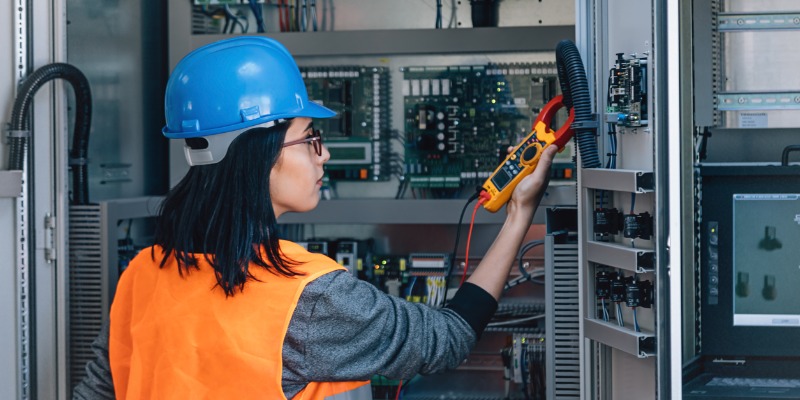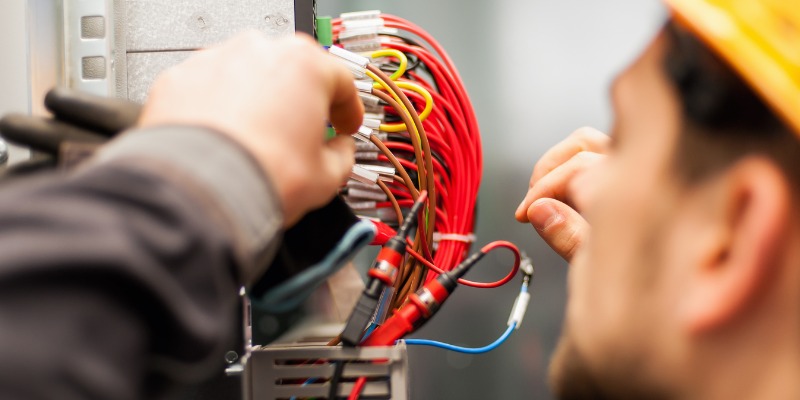
HIPOT Testing, also known as Dielectric Withstand Testing ensures high voltage power cables are sound. The test identifies issues with currents flowing from one point to another. It allows electricians to test devices and determine whether or not the insulation is working. It’s the best way to find damaged insulation, as well as issues such as stray wire strands, contaminants in conductors, terminal spacing issues, and more. Here we review how to test high voltage cables.
Why Test High Voltage Cables?
Testing can identify a potential breakdown of cable insulating material. Damage can cause leakage of currents which pose a serious risk of shock hazards. They are relatively easy to run, take a proactive approach to safety and allow you to take preventative measures before accidents occur.
How to Test High Voltage Cables
The basic steps for testing high voltage cables are as follows:
- Isolate equipment or cables not being tested.
- Set boundaries for 1000 volts at 1.53m around the terminations of cables and equipment being tested to secure the area and keep people away from danger.
- The ground lead of the HIPOT Tester must be connected to a suitable building ground or grounding electrode conductor.
- Once this is done you can attach the high voltage lead to one of the isolated circuit phase conductors.
- Turn on the HIPOT Tester.
- The meter should be set to 1000 Volts or pre-decide DC Voltage.
- Now you can push the test button, watching the resistance reading for a minute.
- Record your readings.
- Next, switch the HIPOT Tester to the voltage measuring mode so you can confirm that the circuit phase conductor and voltage of the HIPOT Tester reads zero volts.
- Repeat these steps for each circuit phase conductor ensuring you test each phase to ground and each phase to each phase.
- Disconnect the HIPOT Tester from the circuits being tested.
- Confirm the circuits are clear so they can be re-connected and re-energized.
Keep records for comparison purposes when conducting future tests.
To learn more on how to safely test high voltage cables, contact our experts at VCM Solutions today.
Passing the Test
Each test must last at least one minute to meet industry high voltage cable testing standards or 110 to 120% of 2U + 1000 V for 1–2 seconds. Passing readings are as follows:
- Unit or Cable: Exposed to a minimum Stress of pre-decide Voltage for 1 minute without any Indication of Breakdown.
- Equipment with a total area less than 0.1 m2: The insulation resistance can’t be under 400 MΩ.
- Equipment with a total area larger than 0.1 m2: The measured insulation resistance times the area of the module can’t be under 40 MΩ.
While performing a HIPOT Test, be certain the person conducting the test is qualified to do so.
High Voltage Cable Testing Equipment
DC HIPOT testing only provides information regarding whether the cables meet specific high-voltage strength requirements. As a result, you don’t get as thorough of an analysis of cable condition. Although DC tests do allow you to set lower values for leakage-current trip points than AC voltage tests, recent studies show that DC testing can actually cause damage to certain types of cable insulation. Therefore, AC has become the preferred mode of HIPOT testing.
Whether you are testing following a high voltage cable installation or as part of routine maintenance, these steps can help.
To learn more about cable testing and how to do it, contact our experts at VCM Solutions today.
Sources:
https://testguy.net/content/278-Power-Cable-Testing-and-Diagnostics-Overview
